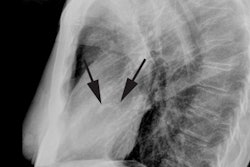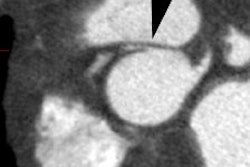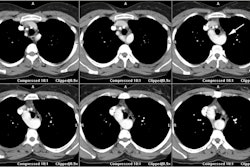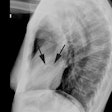Radiology 2002 Oct;225(1):113-9
Reproducibility and accuracy of coronary calcium measurements with
multi-detector row versus electron-beam CT.
Kopp AF, Ohnesorge B, Becker C, Schroder S, Heuschmid M, Kuttner A, Kuzo R,
Claussen CD.
PURPOSE: To methodically evaluate the reproducibility and accuracy of coronary
arterial calcification measurements by using spiral multi-detector row and
electron-beam computed tomography (CT) with a beating heart phantom. MATERIALS
AND METHODS: A phantom was built to mimic a beating heart with coronary arteries
and calcified plaques. The simulated vessels moved in a pattern similar to that
of a beating heart. The phantom operated at a variety of pulse rates (0-140
beats per minute). The phantom was repeatedly scanned in various positions by
using various protocols with electron-beam and multi-detector row CT scanners to
assess interexamination variability. Statistical analysis was performed to
determine significant differences in interexamination variability for various
acquisition protocols. RESULTS: Electrocardiographically (EKG) gated volume
coverage with spiral multi-detector row CT (2.5-mm collimation) and overlapping
image reconstruction (1-mm increment) was found to significantly improve the
reliability of coronary arterial calcium quantification, especially for small
plaques (P <.05). Mean interexamination variability was reduced from 35% +/-
6 (SD) (Agatston score, standard electron-beam CT) to 4% +/- 2 (P <.05)
(volumetric score, spiral EKG-gated multi-detector row CT). CONCLUSION: By
coupling retrospective gating with nearly isotropic volumetric imaging data,
spiral multi-detector row CT provides better input data for quantification of
coronary arterial calcium volume. Multi-detector row CT allows precise and
repeated measurement of coronary arterial calcification, with low
interexamination variability.






